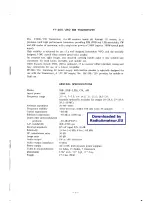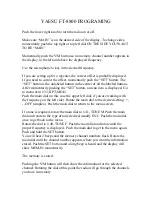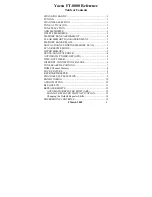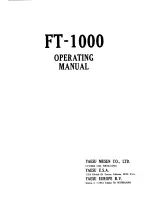
iGage
iG8 User Manual
95
Viewing the Observation Log
(Hidden when Simple)
A detailed log is automatically kept for the files that you
download and submit for processing.
Pressing the ‘Log’
button shows the log file for the currently selected
observation:
Pressing the ‘Append’
button adds a date/time stamp and opens the log for
user editing.
Press ‘Save’ to store your changes or ‘Close’ to close
without saving.
Trimming Occupation Files
(Hidden when Simple)
Sometimes you may want to trim the start or end of an
occupation file before you submit it to OPUS.
Common reasons for wanting to do this include:
Receiver is turned on while sitting on your
tailgate and then moved 20 feet and spun
onto the tripod. The first 5-minutes of the
observation are bogus.
The operator forgets to turn off the receiver
and observation data is collected while the
receiver is transported back to the truck. The
last 2 minutes of the observation file are
bogus.
The observation extends 5-minutes past
midnight UTC, you don’t want to wait an
extra day to process. Trim 6 minutes from the
end of the file.
Clicking the ‘?’ button to the right of the trim dialog
displays usage instructions:
Note: the trimmed length is not reflected in
subsequent screens or on the occupation grid. Only the
submitted file is trimmed, all of the original data
remains in the occupation. The trim settings must be
reloaded after each submission.
Performing Quality Control Checks
(Hidden when Simple)
Pressing the
button will launch the UNAVCO TEQC tool and run a
standard RINEX QC run on the currently selected
observation file. When the run is complete, the results
will be shown in a window:
You can press the ‘TEQC Help’ button to download the
User Guide for TEQC from the UNAVCO web site.
TEQC is a great tool for evaluating both the receiver’s
performance and the site suitability for collected data.
We use it to verify receiver operation in our hardware
validation process.
Advanced Download Settings
Configuring the Download Tool
Click on the 'Configuration':
At a minimum enter these values:
Agency
your company name
Operator the name of the default operator
Email
your email address
If you change ‘Show Advanced Settings’ from ‘Simple’
to ‘Normal’, ‘Support OPUS Projects’ or ‘Advanced’
additional setup values are shown:















































